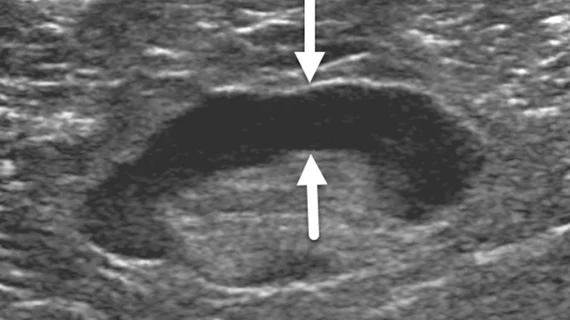Is scanning the axilla during diagnostic breast ultrasound necessary?
Experts recently questioned the necessity of scanning the axilla region during diagnostic breast ultrasound, as new data indicate that it is minimally beneficial for cancer detection.
The new research was published April 6 in Clinical Imaging. In the paper, experts detail their analysis of nearly 20,000 cases of women who underwent breast ultrasound that included scanning of the axilla.
Not a single patient from the cohort was diagnosed with occult breast cancer. This finding prompted corresponding author of the new paper Irish Chen, with the Department of Radiology at the David Geffen School of Medicine at UCLA, and colleagues to question whether scanning the axilla region is necessary for patients with low likelihood of cancer.
“Drawbacks of breast ultrasound are that it is time consuming to perform and technically difficult in patients limited by positioning or obese body habitus,” the group explained. “Breast ultrasound can also detect many benign entities and has a high false positive rate depending on operator experience, which can lead to unnecessary biopsies and follow-up exams.”
At their institution, the ipsilateral axilla is routinely included in diagnostic breast ultrasound protocols regardless of indication, which is not the standard at many other facilities. This put the team in a good position to study the clinical impact of incidental findings identified when scanning the area.
Out of the 19,692 exams included in their analysis, incidental findings given a BI-RADS category 3 or 4 were identified in just 91 of the scans. None of those 91 resulted in a breast cancer diagnosis, though there was one case of SLL/CLL lymphoma identified incidentally during the two-year timeframe (it should be noted that these cases occurred between 2017 and 2019 before COVID).
“We have demonstrated that decreasing unnecessary axillary scanning would lead to fewer false positives without missing any occult breast cancers,” the group noted, adding that this move would also save time and healthcare spending without adversely affecting patient outcomes.
The study abstract is available here.

